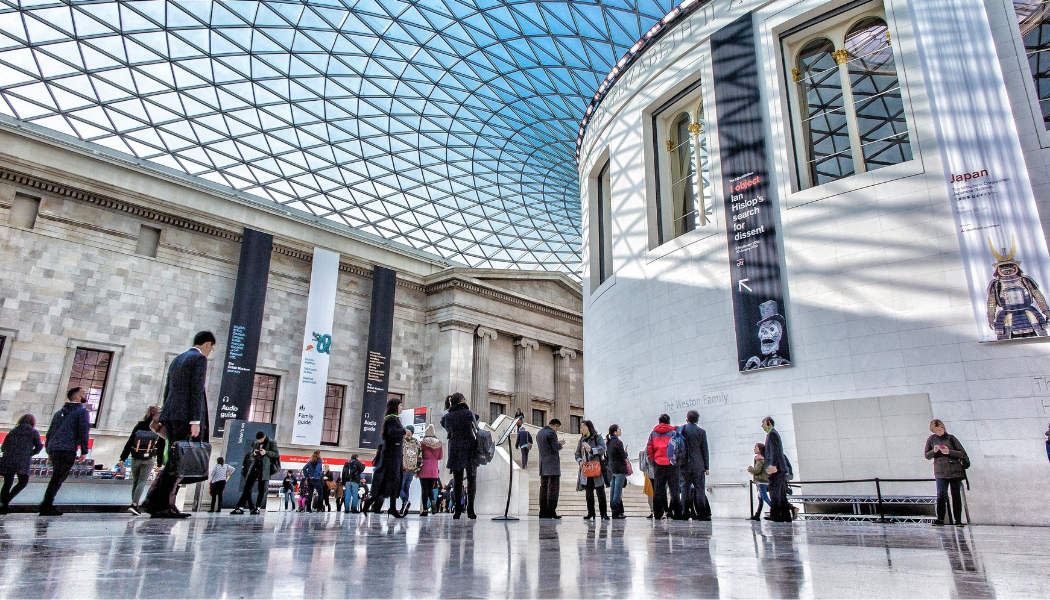The welcomed 6.4 million visitors in 2024, representing 11% growth as UK attractions see “steady but not significant” growth
The British Museum has retained its position as the UK’s most visited attraction for the second consecutive year, counting 6.4m visitors last year.
The figures, published by the Association of Leading Visitor Attractions (ALVA), show that the museum saw an 11% growth in annual visitors.
Collectively, the new report shows that the UK’s leading visitor attractions welcomed 157.2 million visits in 2024, representing a 3.4% increase on the previous year.
The Natural History Museum in South Kensington was again the second most visited attraction in 2024 with 6.3m visitors, recording an 11% increase year-on-year. Windsor Great Park remained the most visited outdoor attraction with 5.6m visitors.
While significant increases in footfall were recorded at specific venues, the combined 2024 visitor figures still fall 8.8% behind pre-pandemic levels.
Bernard Donoghue OBE, Director of ALVA, called 2024 a “year of steady but not significant growth” for visitors attractions.
“The long economic recovery from lock-down during COVID, the effects of the cost-of-living crisis on consumer spending, increasing business costs and modest inbound visitor numbers to the UK mean that 2024 was a financially changing year for visitor attractions.”
Across the country, the typical attraction in London saw a 3% increase in visitors, while Scotland tied with Northern Ireland with a 3.2% increase. The region of England outside London with the biggest year-on-year growth was the East Midlands, which was up 4.5%, followed by Yorkshire & Humberside with 4.2%.
The 20 most visited UK attractions in 2024, according to ALVA
| 2024 Rank | 2023 Rank | Site | Total Visits in 2024 |
|---|---|---|---|
| 1 | 1 | The British Museum | 6,479,952 |
| 2 | 2 | Natural History Museum (South Kensington) | 6,301,972 |
| 3 | 3 | The Crown Estate, Windsor Great Park | 5,670,430 |
| 4 | 4 | Tate Modern | 4,603,025 |
| 5 | 5 | Southbank Centre | 3,734,075 |
| 6 | 6 | V&A South Kensington | 3,525,700 |
| 7 | 7 | The National Gallery | 3,203,451 |
| 8 | 10 | Somerset House | 3,074,736 |
| 9 | 9 | Tower of London | 2,902,385 |
| 10 | 8 | Science Museum | 2,827,242 |
| 11 | 12 | National Museum of Scotland | 2,314,974 |
| 12 | 13 | Kew Gardens | 2,273,976 |
| 13 | 11 | Royal Museums Greenwich | 2,255,753 |
| 14 | 15 | National Galleries Scotland: National | 1,999,196 |
| 15 | 14 | Edinburgh Castle | 1,981,152 |
| 16 | 16 | Royal Albert Hall | 1,753,371 |
| 17 | 17 | Westminster Abbey | 1,717,296 |
| § | 1 | National Portrait Gallery | 1,578,065 |
| 19 | 24 | The Barbican Centre | 1,541,194 |
| 20 | 18 | St Paul’s Cathedral | 1,493,184 |
ALVA said notable annual growth stories included the National Portrait Gallery, which moved up nine places to 18th most visited attraction, following a 36% increase to 1.5m visitors. The growth followed its reopening in summer 2023. Young V&A welcomed 596,100 visitors in 2024, and moved 35 places to 63rd position, a 47% increase in its second year of reopening.
In Scotland, the most-visited free attraction continued to be the National Museum of Scotland, which moved up one place to 11th most visited, and saw a 6% increase to 2.3m visitors. Edinburgh Castle continued to be the most visited paid-for attraction in Scotland with a 4% increase in visitors to 1.9m, and 15th place.
In Wales, the most visited attraction was St. Fagan’s National Museum of History with 600,690 visits (62nd place). It was followed by the National Museum Cardiff with 373,382 visits (117th place), while the highest percentage increase was WWT Llanelli (Wildfowl and Wetland Trust) which saw 8% more visitors (61,705).





